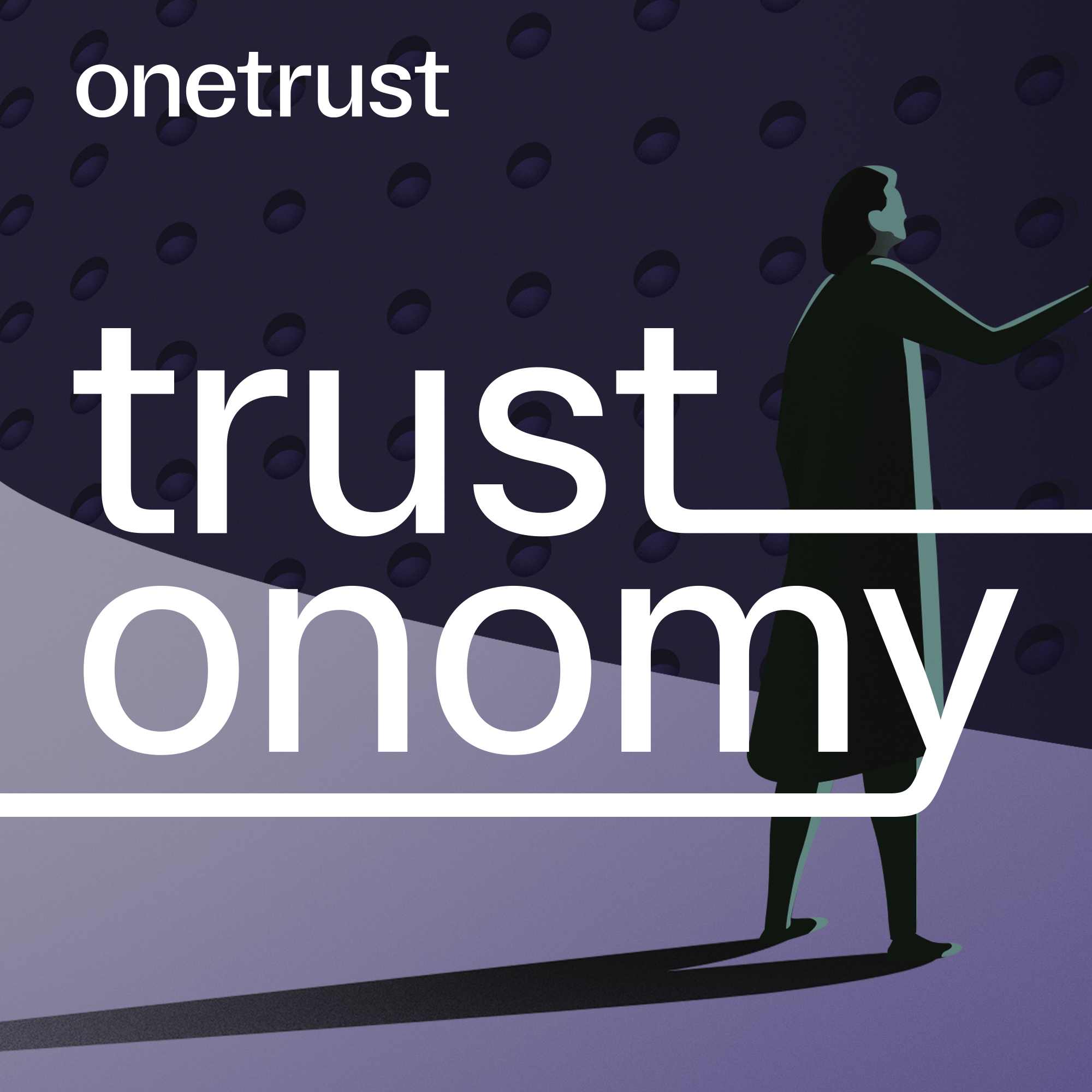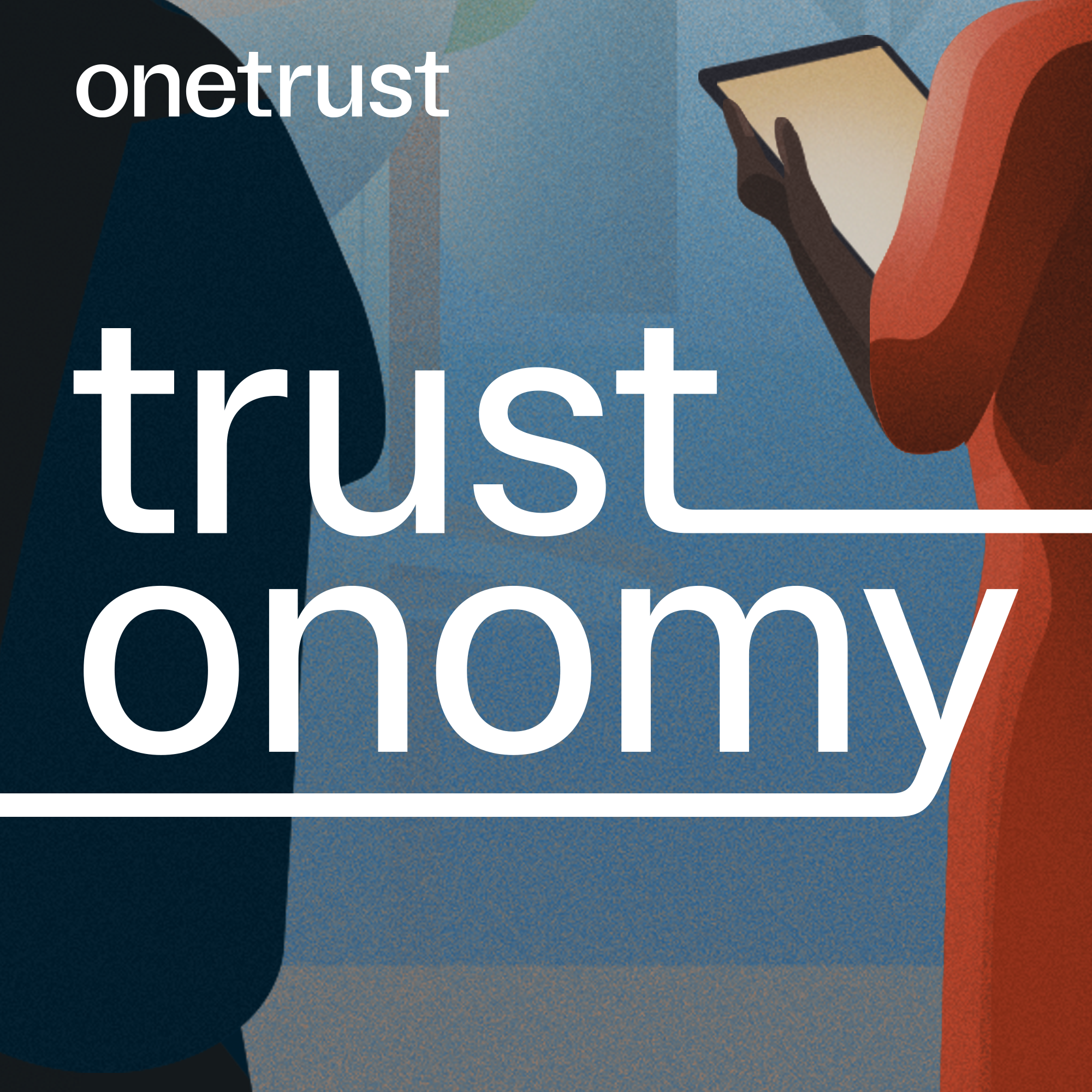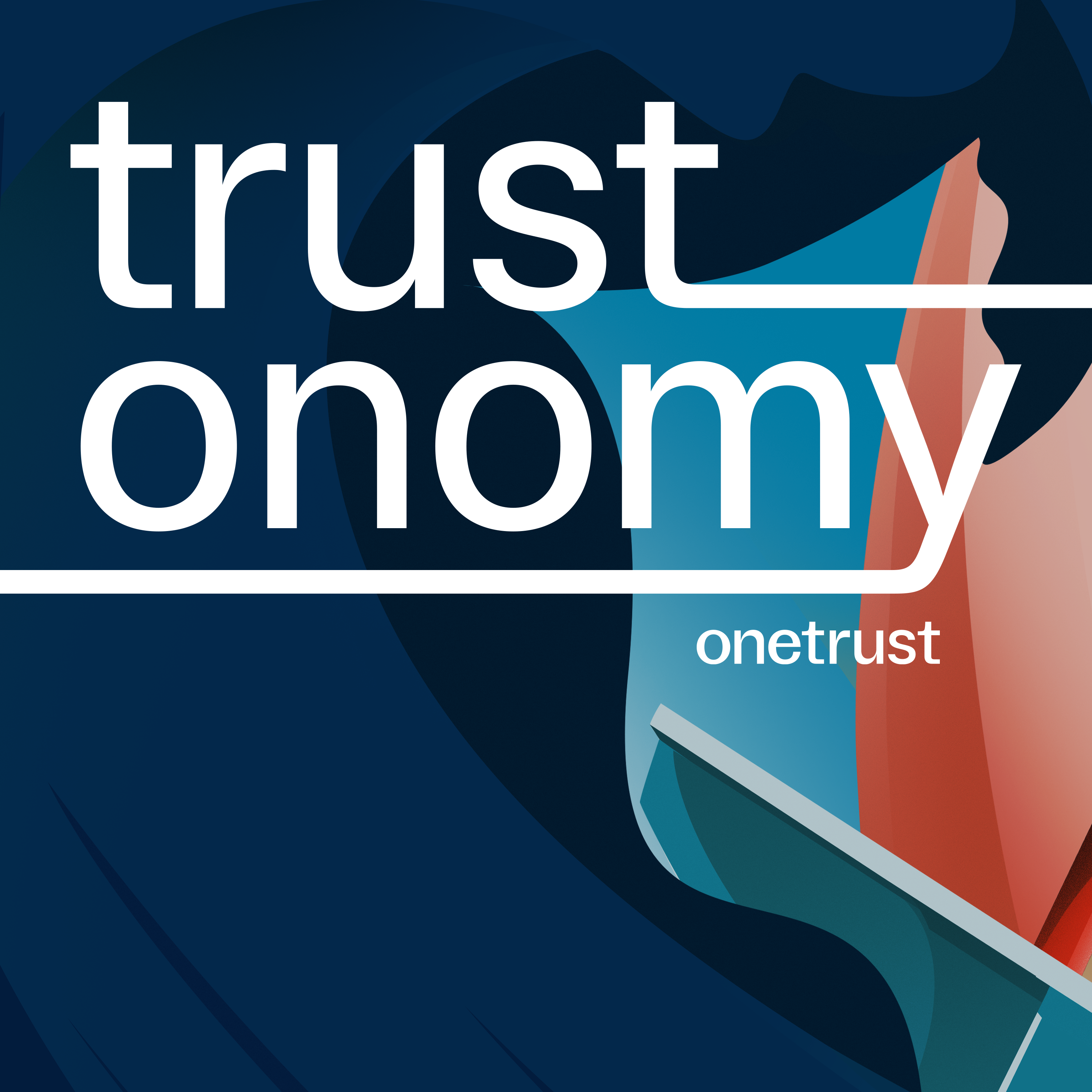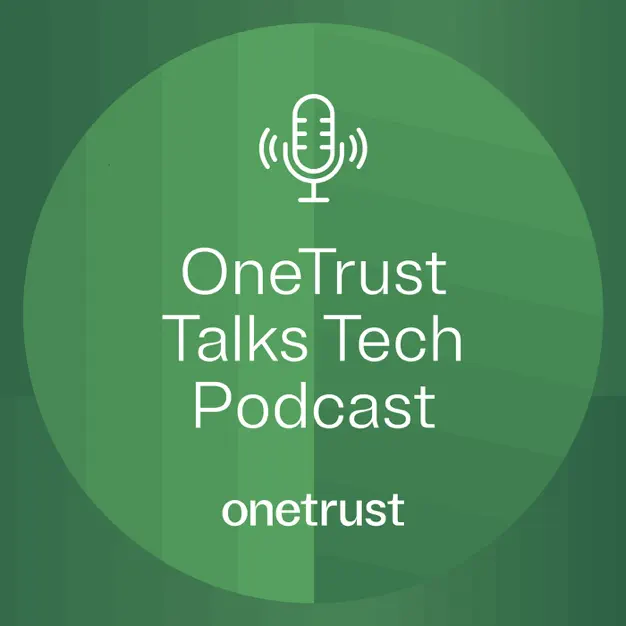Nov 23, 2023
GO THERE: Join us at TrustWeek 2024 to see where trust can take your business
-
Trust Intelligence Platform
-
-
Explore Our Clouds
-
OneTrust Community
-
TrustWeek
Join us for our annual conference and discover where trust can take your business
-
Connect Workshops
Connect globally, network locally
-
Company
-
Join our team
OneTrust is a certified Great Place to Work
-
Newsroom
Get the latest news, announcements, views, and more
On-demand webinar coming soon...
On-demand webinar coming soon...
Episode 5: The Tylenol murders and the trust recovery

About this episode
Over three days in the fall of 1982, seven healthy people in the Chicago area died suddenly. At first, medical examiners were baffled but soon realized all the victims had taken Extra-Strength Tylenol capsules. Public trust in the medication vanished overnight. Johnson & Johnson, the makers of Tylenol, had to act fast if they wanted to save lives and their product.
Veteran Chicago news reporter Phil Rogers recalls how the Tylenol murders terrified the nation and how Johnson & Johnson managed the crisis. OneTrust’s Chief Trust Architect, Andrew Clearwater, examines how Johnson & Johnson defied the odds and actually strengthened trust in their brand.

Guest
Phil Rogers

Guest
Andrew Clearwater
Phil Rogers is an Emmy Award-winning journalist, who spent more than three decades as a reporter for NBC in Chicago. During his career, he reported from war zones and breaking news stories across America and around the world. Prior to joining NBC, Rogers spent 14 years as a reporter for CBS all-news station WBBM in Chicago.
Andrew Clearwater is the Chief Trust Architect at OneTrust.
Shalene Gupta:
It's September 29, 1982, an ordinary Wednesday morning in a family friendly Chicago suburb. A 12 year old girl named Mary Kellerman wakes up with a common problem. She has a cold.
Phil Rogers:
She didn't feel well, and she had a headache. She stayed home from school, and she retrieved some Extra Strength Tylenol from the medicine cabinet.
Shalene Gupta:
Mary's mom bought Tylenol the day before.
Phil Rogers:
Almost immediately, Mary started coughing and she fell to the floor.
Shalene Gupta:
Downstairs, Mary's dad hears the crash. When he finds her on the floor, Mary's eyes are dilated, her breathing is shallow, and labored as though she's suffocating.
Phil Rogers:
They got her to a hospital. She got progressively sicker and sicker, and was pronounced dead a short time later.
Shalene Gupta:
Mary Kellerman's death marked the start of a nationwide crisis because her death was just the beginning of what's come to be known as the Tylenol murders. I'm Shalene Gupta, and this is Trustonomy, an original podcast from OneTrust. All season, we've been exploring the ways companies lose the trust of the public and the devastating consequences that follow. But now for our season finale, we're telling a different kind of story. This is a story about how a crisis helped a company rebuild trust by proving that they had their customers' back.
Andrew Clearwater:
It's important if you're building trust in a company that you don't stagnate at just meeting people's expectations, it's actually going to be around exceeding them.
Shalene Gupta:
That's Andrew Clearwater. He's going to tell us how Johnson & Johnson, the makers of Tylenol, helped rebuild trust in one of the nation's biggest brands. But first, we need to hear from veteran journalist Phil Rogers.
Phil Rogers:
I don't remember a time when the public was more frightened than during the Tylenol murders in Chicago.
Shalene Gupta:
Last year, Phil retired after 31 years reporting for NBC 5 news, but in the fall of 1982, Phil was just starting his career working at WBBM Radio, a local Chicago station when the murders hit the news. At first, nobody knew why Mary Kellerman had died. At this point, her death wasn't tied to the Tylenol she took that fall morning. And it's the mystery at the core of the story that made the fear spread so quickly.
Phil Rogers:
There is no minimizing how scared everybody was. It was absolutely a terrifying time. That level of horror and outrage going on for weeks and weeks, and a lot of people wondering if another shoe was still going to drop.
Shalene Gupta:
That worry was sadly completely justified. In fact, even as Mary's family was trying to process her sudden death, tragedy was stalking other folks in the Chicago area.
Phil Rogers:
A postal worker by the name of Adam Janus, who was 27 years old, is getting up and starting his day. He doesn't feel very well. He calls in sick. He goes to the grocery store. And while he's there, he picks up a bottle of Extra Strength Tylenol.
Shalene Gupta:
Then he heads home and takes a couple capsules from the bottle.
Phil Rogers:
And comes out of the bathroom clutching his chest, and obviously is in real distress. His wife is alarmed by this. And they call 911 and get an ambulance there to try to give him some help. Take him to the hospital and he dies a short time later.
Shalene Gupta:
Like Mary, Adam Janus' death is a total mystery. Authorities thought maybe it was a heart attack, but all they really know is that they have a seemingly healthy young man who has suddenly died. Later that day, recovering from the shock of his death, Adam's brother's Stanley and the rest of the Janus family leave the hospital and go back to Adam's house to make funeral arrangements.
Phil Rogers:
Stanley was himself not feeling well and was overcome with grief. He asked if they had any pain medication, was told, "Yeah, it's in the bathroom medicine cabinet. There should be some Tylenol in there." He went in and retrieved the bottle and came out with it. And his wife Theresa said, "You know what? Why don't you let me have two of those too? I'm not feeling so well either." They both ingested the capsules. Almost immediately, they fell to the floor suffering the exact same kind of symptoms as Adam had been displaying. They are quickly taken to the same hospital where they would eventually be pronounced dead as well.
Shalene Gupta:
Three members of the same family all collapsed in the same house all on the same day. They were all taken to the same hospital by the same paramedics. First responders and medical staff were baffled, but that would soon change with a random bit of luck.
Phil Rogers:
There were two different completely unrelated sets of paramedics and firefighters from different communities who happened to know each other.
Shalene Gupta:
One set knew about young Mary's death and the other set knew about the Janus family.
Phil Rogers:
They happened to talk to each other and mentioned, "Boy, I had this crazy run in my department. These people were poisoned." And the other party's saying, "You know what? We had the very same thing happen here." And start to put two and two together.
Shalene Gupta:
Four people in the Chicago area had now died in the same way all on the same day. Then within hours, three more people perished. Extra Strength Tylenol remained the common link in every case. Armed with this information, the deputy medical examiner at the Cook County office, Dr. Edmund Donoghue, decided to dig deeper.
Phil Rogers:
He does have the foresight to ask a colleague to open one of the bottles and smell it. That person reports back that he did so, and there was a strong almond smell, which is a very telltale sign of cyanide. They send that out to be tested and it comes back positive for cyanide.
Shalene Gupta:
A dose of cyanide prevents the body cells from processing oxygen. It attacks the respiratory system, the heart, and the central nervous system. So Donoghue's discovery perfectly explained the symptoms suffered by the victims. On September 30th, a day after the deaths began, the Cook County medical examiner's office called an emergency press conference announcing the situation to the public. They still didn't have many answers, and neither did Johnson & Johnson.
Phil Rogers:
A reporter who was present at that news conference calls Johnson & Johnson to see if they have any comment about the fact that their product seems to be associated with so many deaths in Chicago. The official who took the call at Johnson & Johnson said, "This is the first we've heard of it."
Shalene Gupta:
While Johnson & Johnson tried to quickly figure out their response, the authorities of course began to take action themselves.
Phil Rogers:
Authorities were really, really worried about getting the word out. And so you would see public health officials going door to door handing out flyers in multiple languages, warning people don't take Extra Strength Tylenol. The police cars would drive down the street using the speakers on the tops of their cars, warning the public. If have you have bottles of Tylenol, turn it in.
Shalene Gupta:
Thousands of bottles of Tylenol were turned in for testing, but there were still lots of questions. Why were the deaths spread all over Chicago? Were there more victims still to be discovered? And how did Tylenol become tainted in the first place? Was it perhaps the manufacturer's fault? Cyanide, after all, was used to test lead levels in the factories where Tylenol was made. The theory was soon dismissed. The cyanide in the poison capsules had a different chemical makeup. And even more troubling, the poisoned capsules were coming from more than one factory. This lead investigators to a frightening conclusion.
Phil Rogers:
That was the point where they knew they had somebody out there that was tampering with the capsules, some kind of madman that is intentionally poisoning the Tylenol and putting them in the stores.
Shalene Gupta:
Then on October 1st, just two days after people started dying.
Phil Rogers:
A man mails an extortion letter. It was written anonymously to Johnson & Johnson demanding a million dollars be deposited in a Chicago bank, in his words, if you want to stop the killing.
Shalene Gupta:
Using the bank account number, authorities tracked the threat back to a man named James Lewis, and while he didn't admit to the crime-
Phil Rogers:
He was given paper and writing materials, and he drew a picture of how he thought the killer probably put the Tylenol into the capsules. A lot of the investigators thought that indicated more than just a little creativity on Mr. Lewis's part, that it showed that he was possibly even using his own recollection.
Shalene Gupta:
Here's what was clear. An enormous number of lives were now at risk. They could be looking at a horrifying case of mass murder. The scale of the tragedy was expanding by the hour. Johnson & Johnson was understandably subject to a lot of serious scrutiny at this point. All eyes were on them. They had to react.
Phil Rogers:
Johnson & Johnson mounted a big blitz of information. They go on television, tell the public don't buy our product. They also, for a while, killed all their advertising completely. They offered a reward for information that might lead to the killer. They worked incredibly closely with law enforcement and with the Food and Drug Administration. And they start pulling it off the shelves by the tens of millions of bottles, which they admit are now going to be tested for the potential presence of cyanide.
Shalene Gupta:
That nationwide recall took place on October 5th, less than a week into the crisis. It was the first mass recall in American history. This was an extraordinary and full-fledged reaction. In 1982, the term crisis management wasn't even a thing, so Johnson & Johnson had to invent it on the fly.
Phil Rogers:
Johnson & Johnson ends up recalling 31 million bottles of Extra Strength Tylenol, worth an estimated $100 million. That's in 1982 dollars. And they were taking quite a hit on this because, at that point, Tylenol was the number one over the counter pain medication. Suddenly, everyone's afraid of this product.
Shalene Gupta:
The change to Johnson & Johnson's bottom line was enormous and immediate. In just a few weeks, Tylenol's market share plummeted from 35% to 8%.
Phil Rogers:
It doesn't come much worse than that for an American business to have to go to the public and say, "Don't use our product, it might kill you." If you had asked any of us in the news business, or anybody in the public at that point in the days after the murders began to unfold, we would've told you that there was one fact that was indisputable, and that that was Tylenol was dead as a product.
Shalene Gupta:
When a company is faced with such a terrible crisis, a common reaction is to retreat and make themselves invisible. But Johnson & Johnson did the opposite. They decided to reach out.
Phil Rogers:
They set up toll-free numbers for the public and for the news media to call with updates on information from the company itself. The chairman of the company was not shy. He went on big shows. He was on 60 Minutes, he was on Donahue. He appeared in the television commercials himself going on as the face of the company to talk about why people shouldn't take the product, and let me show you what we're doing to safeguard the public.
Shalene Gupta:
Of course, any solution was never just going to be about optics. They needed a concrete change. By November, Johnson & Johnson announced an innovation that they'd been experimenting with before the murders.
Phil Rogers:
They go back on television and they announced for the very first time in history tamper-proof packaging. And they demonstrate in the commercial, I remember this really, really well, they show the box, that the end flap is glued shut. That when you open the box, you're going to take out a bottle that has a safety seal around the neck of the bottle, a plastic shrink wrap seal. And then you're going to open the bottle and it has a foil cap across the top of the bottle.
Shalene Gupta:
Tamper-proof packaging was exactly the innovation that an anxious public wanted, even if they didn't know it yet. In 1983, Congress passed a bill making it a federal crime to tamper with medications. It was called the Tylenol Bill.
Phil Rogers:
I remember that a disaster official who was responsible for federal legislation told me once that all safety regulations are written in blood. And what she meant by that is that any good law that deals with the safety of the public probably stemmed from a tragedy.
Shalene Gupta:
The daily life of American consumers was changed forever. A new layer of protection and of trust was now baked into the consumer experience. So did it work out for Johnson & Johnson? Did they regain the trust of the public? In just a year after the murders, Tylenol regained its entire market share and was once again the top pain reliever in the country.
Phil Rogers:
Johnson & Johnson did the best job I can remember of trying to take control of a tragic situation that was affecting their company, and they managed to turn it around.
Shalene Gupta:
And proof of that is possibly sitting in your home right now.
Andrew Clearwater:
My experience with it is that it's something you definitely have in your cupboard, and Tylenol is not something to worry about.
Shalene Gupta:
Like most people, Andrew Clearwater, the chief trust architect at OneTrust has always thought of Tylenol as a brand that everybody can trust. But as we've just heard, there was a brief time when trust in Tylenol was shaken to its core.
Andrew Clearwater:
The tragedy here is you would trust that if you go to a store that is selling medication to make you healthier, it's such an unexpected thing, and there really was no way that either the company or the families could have known the circumstances that were going to unfold.
Shalene Gupta:
Andrew's job is about discovering new ways to secure customer trust in today's digital world. That title, trust architect, carries a lot of weight.
Andrew Clearwater:
I'm one of very few, I believe. I might really be the second if I can believe what's on LinkedIn. But it's a unique job for sure. There's a combination of research work where we're looking at privacy and security ethics and ESG, and there's a kind of facilitating the development that goes with building a program that works for a lot of companies.
Shalene Gupta:
The issues that companies deal with today may look radically different from the pre-cloud offline world of the 1980s, but Andrew says the way Johnson & Johnson dealt with their crisis still has a lot to teach us.
Andrew Clearwater:
What's interesting about this story is that we wouldn't have known so much about what Johnson & Johnson values if they hadn't been tested. People can say whatever they want, but it's their actions that we measure.
Shalene Gupta:
So what were Johnson & Johnson's actions? They took their commercials off the air, and recalled 31 million bottles of Tylenol. They also worked with law enforcement and offered a reward for information about the case. They set up a hotline. They responded to a real risk in a transparent, meaningful way.A Finally, they responded by reinventing their packaging.
Andrew Clearwater:
It's the fact that they made such a bold move so quickly. They said it with authority, this is what we're doing, this is our response. That's them owning it. They are able to show that, even in this situation that seems wildly out of control, that they are calling the shots about how they're going to respond to it.
Shalene Gupta:
And it's worth remembering, they responded efficiently even as the crisis was still unfolding.
Andrew Clearwater:
They didn't know at the moment whether they were solving a nationwide problem or a regional problem. But the choice that they made shows how they valued people, and how they chose to think about the risk. They put themselves in the place of the individual who's buying the medication. This is customer-centric values for sure.
Shalene Gupta:
By acting so decisively, Johnson & Johnson made their values plain for all to see. They were a company that believed in what Andrew calls an outside in approach. That means the needs of the public inform the company's actions. Other companies may have gone with an inside out approach, which puts their own concerns first.
Andrew Clearwater:
The inside out view, I mean, they're first going to think about what's the loss to the company from a financial point of view, maybe what are the perceptions of our company that are going to be harmed, the reputational damage, the implications, I guess, to the long-term outcome of the company? And from that point of view, you're not going to get the same result as this story.
Shalene Gupta:
Johnson & Johnson's customer first approach wasn't just lip service. They let that value dictate their response. In other words, they weren't inventing some new moral compass on the fly. Their plan emerged from values they already had.
Andrew Clearwater:
So if your values were created by your marketing department, then you won't see them carried out later on if they weren't actually internalized, taught, and part of how the company behaves. One of the things that you can see here with Tylenol is that they lived their values. And I think it's in times of crisis that values are tested.
Shalene Gupta:
It shouldn't surprise anyone that putting people first also happens to be good for a brand in the long run. People respect companies like that, and companies like that earn their trust.
Andrew Clearwater:
Tylenol becomes this value-filled underdog almost, even though they're a giant corporation, right? They are trying to figure something out. I think it really brought the public along with them. Tylenol ends up looking like a victim of something that happened to them.
Shalene Gupta:
Johnson & Johnson did not simply take action. They also communicated that action to the public. Just weeks after the Tylenol murders, their chairman went on 60 Minutes and the Donahue show. The Tylenol murders were dominating the American imagination. So Johnson & Johnson made sure their voice was at the forefront of the national conversation.
Andrew Clearwater:
Communicating a strategy is what gives people confidence in your actions. If you're doing it in a vacuum and people are scared, they will not have confidence. And what's interesting about Johnson & Johnson is not only were they able to communicate it, they did it with such immediacy.
Shalene Gupta:
All that communication wasn't about claiming innocence either. Instead, they spent that airtime explaining what they were doing to fix the situation. Again, Johnson & Johnson was putting the needs of their customer first. In doing so, they received a massive lift themselves.
Andrew Clearwater:
It would've been easy for Tylenol to spend a lot of their communications time on how this was not them. But by really bringing it back to, look, this is what we're going to do about it, it puts you in the space of showing basically capability and value when normally you could be focusing on the crisis itself. And so by making it clear through your communications, the story about what Johnson & Johnson was doing became the story.
Shalene Gupta:
It can feel like a leap of faith to really let a customer first open and transparent culture guide your company. But it's more pragmatic than it may seem. The extraordinary actions Johnson & Johnson took, for example, may seem altruistic, but here's the thing, it was also a kind of enlightened self-interest. A company that earns the public's trust has earned the public's business. Every time a shopper looked at a bottle of Tylenol, the visual of that new tamper-proof packaging reminded them that this was a company they could trust.
Andrew Clearwater:
And these protections became industry standard, and it became a way to visually see what was different between before the crisis and after the crisis. And I think that matters a lot. It's putting it back in this new form that really changes the experience. And I think customers need to be able to perceive the brand and what's changed here.
Shalene Gupta:
By investing in a new technology, that tamper-proof seal, Tylenol was suddenly a brand that stood out as safe instead of dangerous. They reversed the narrative about their product. And the ultimate result is that they established a competitive advantage over their competition.
Andrew Clearwater:
If you're choosing a technology that enhances trust, you might actually bring people towards your brand in a way that causes the rest of the industry to have to catch up. And if they try to catch up, they're going to incur costs in the rush to bring that technology to market. Or they might not even get the benefit of trust because the brand that acted quickly will be able to show, hey, we acted because we are acting in your best interest. The others, they don't get that halo effect.
Shalene Gupta:
In fact, Tylenol came out of the crisis looking like a leader. And the result? We heard earlier that their market share bounced back to its pre-crisis level. Nobody thought that was possible.
Andrew Clearwater:
That is remarkable, both in how quickly it dropped and how quickly it returned. But also in an odd way, all of this talk about Tylenol, once it became clear that they were taking the right actions, it sort of built recognition among households that probably wasn't even there prior to it. And then it's sort of in the collective consciousness after that. I can't think of any company that has made such a quick recovery like that, and boy, could it have gone another way.
Shalene Gupta:
Andrew envisions a future where nobody has to go that other way. He believes every company can benefit from treating their customer's trust like a core part of their business. The goal is to exceed people's expectations. And an entire metric of trust can be established to see how you're doing. The customer's trust in a company becomes a real measurable thing of value.
Andrew Clearwater:
Let's say we have privacy, ethics, security, and ESG sort of building the core of our trust program. Talking about trust measurement and trust scores. Isn't it important to know what other people think of what you do, right? In the end, I think you want a combination internally of values that show what you're doing for the business, but you've got to bring into scope feedback from the key audiences about their experience. And I think that might be a bit of a seed that grows into trust scoring overall.
Shalene Gupta:
Listening is fundamental to trust. It's where customer first values and effective communication really begin. You need to listen to the public's concerns and hopes, tell them what you're going to do to help, and then do it.
Andrew Clearwater:
But when it comes down to whether those actions end up being trusted or not, you don't really find that in the playbook, right? That's still something that has to happen in the culture.
Shalene Gupta:
So whatever happened to James Lewis, the star suspect in the Tylenol murders? He was eventually charged with extortion for the letter he sent to Johnson & Johnson, and sentenced to 12 years in prison. But despite their suspicions, investigators were never able to pin him with the murders. The case was reopened several times over the years, but sadly, there was never a proper ending to this tragedy.
Phil Rogers:
When Lewis died in the summer of 2023, there was still no resolution in this case. To this day, the Tylenol murders in Chicago remain unsolved.
Shalene Gupta:
And yet, for all that uncertainty and chaos, real and positive changes were made. In 1989, new FDA guidelines required all over the counter drugs to be sold in tamper-proof packaging. Tylenol's new packaging became the vanguard, leading the way to a whole new landscape for American consumer goods.
Phil Rogers:
Whenever you go to the store and you buy something that has a temper proof seal, when you buy a bottle of orange juice, and you unscrew the top of it, and you have that really hard to peel off foil seal across the neck of the bottle, all of that stems from the Tylenol murders in Chicago. And it was all invented by Johnson & Johnson.
Shalene Gupta:
This season, stories from the past have inspired new insights about trust and the role it plays with successful businesses. We saw a number of tragedies along the way, but a few powerful tools always made the difference when disaster struck. Tools that often go ignored, like privacy and informed consent, third party risk management, respect for whistleblowers, and proper data management. Tools like these are the fundamentals of trust. A lot can go wrong out there, but trust isn't about some perfect world where nothing ever goes wrong. It's about knowing that someone's done right by you. It's about knowing every effort has been made to keep you safe. And I've learned this much for sure, in the world of business, trust is something we have to earn every day.
So that's a wrap for season one of Trustonomy. I hope you've loved listening to the show as much as I've enjoyed hosting it. The team behind Trustonomy is story producer and showrunner David Swanson, executive producer Tori Allen, writer Michael Harris, and sound designers, Mark Angly, Christian Prohom, and Robyn Edgar. From OneTrust, we have Kadi Wharton and John Ville, with graphic design by Isabella DuBose. I'm Shalene Gupta, and this is Trustonomy, an original podcast from OneTrust. Thanks for listening.
More from Trustonomy

Episode 4: The privacy breakdown that betrayed a nation
Many companies collect personal data - names, birthdays, interests, payment information, and geolocation. But there’s no data more private and sensitive than biological data. So what happens when that information is used without consent?
November 09, 2023 28 min read

Episode 3: The missing data that doomed Pearl Harbor
Companies run on data. It’s the backbone that allows them to understand their customers, make informed decisions, and see the big picture. But what happens when you don’t know what data you have, where it is, or how to access it?
October 26, 2023 30 min read

Episode 2: Blowing the whistle on the Space Shuttle Challenger disaster
There’s a fine balance between getting things done and getting them done the right way. Every business has deadlines, technical hurdles, and contractual pressures to consider. But what happens when you create an environment that prevents people from sharing ideas and concerns?
October 12, 2023 28 min read
You might also like

OneTrust Talks Tech
The OneTrust Talks Tech podcast is dedicated to providing listeners with weekly OneTrust product updates and information from industry experts on privacy, risk, compliance, ethics, and environmental topics.
Your partner in trust transformation
Top Searches
Privacy Matters
Our privacy center makes it easy to see how
we collect and use your information.
Your privacy
When we collect your personal information, we always inform you of your rights and make it easy for you to exercise them. Where possible, we also let you manage your preferences about how much information you choose to share with us, or our partners.
© {{CURRENT_DATE}} OneTrust, LLC. All Rights Reserved.
On-demand webinar coming soon...







